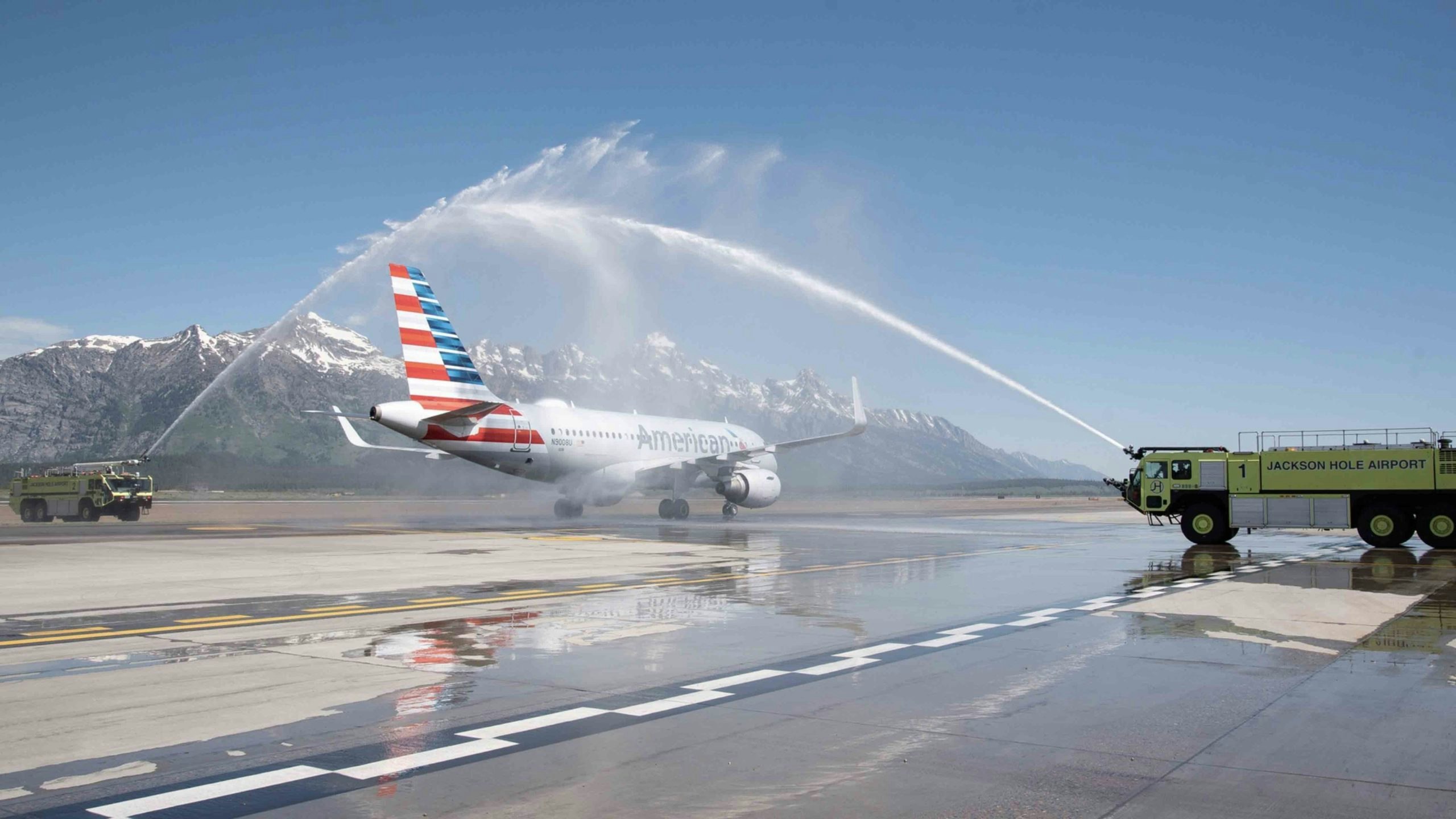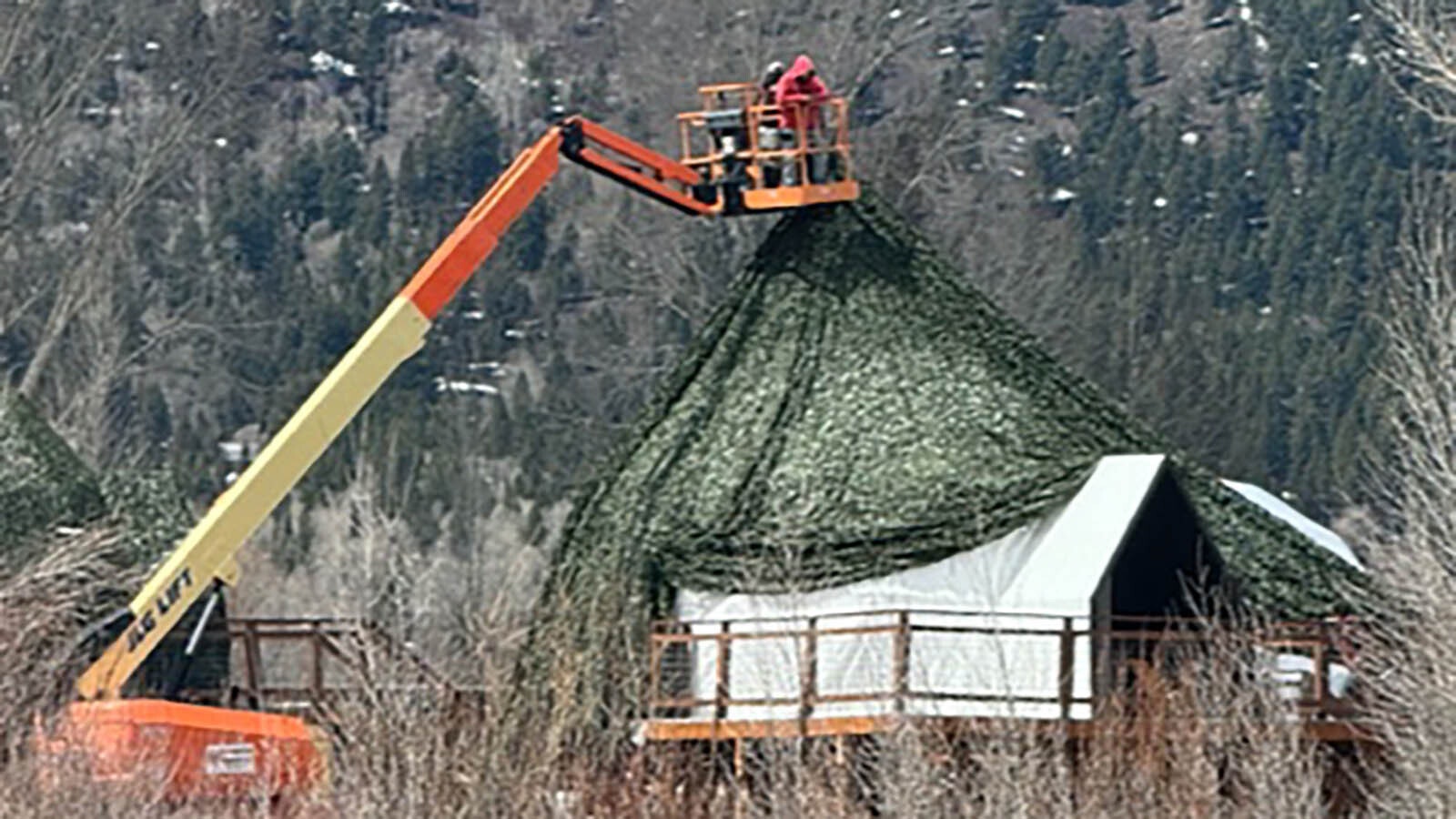Of the 99 communities in Wyoming, 40 have some form of airport, ranging from commercial airports with regional flights to non-paved airports used for general aviation.
And at least one intergalactic airport in Green River.
The one thing they all have in common are costs for upkeep and maintenance, part of which are paid in some communities by a fee on the very planes that use the airport.
“Airports generally utilize direct and indirect cost centers to determine the actual costs associated with different aspects of the airport,” said Devon Brubaker, manager of the Southest Wyoming Regional Airport in Rock Springs. “Specific to the airfield, we total the costs associated with maintaining a safe and secure airfield. These costs include pavement maintenance, safety area maintenance, snow removal and aircraft rescue firefighting to name a few.”
One way an airport can help cover those costs is through landing fees. All of Wyoming’s nine commercial service airports charge some sort of landing fee. Not just for general aviation, but for commercial flights as well. Depending on the airplane being flown and how much it weighs, the cost varies depending on where it lands.
According to Brubaker, a certain percentage of the overall administration and labor costs for an airport are allocated to the airfield. The airport then forecasts the total landed weight of aircraft anticipated in the upcoming year.
“In most circumstances in Wyoming, due to our lower levels of traffic, the resulting landing fee to break even in that cost center is higher than the market will bear,” Brubaker said.
Fortunately, the Federal Aviation Administration (FAA) allows some leeway in this area.
Airports are required by federal law to be as self-sustaining as possible and are required to maintain a schedule of charges for their use of the airport. However, according to the FAA’s policies and procedures concerning airport revenue, market conditions may require an airport to charge below what is required to be self-sustaining.
In cases such as these, according to the FAA, an airport owner’s decision to keep charges below market conditions to ensure public service “is not inherently inconsistent with the obligation to make the airport as self-sustaining as possible”.
According to Brubaker, landing fees are just one revenue stream of several used by an airport to cover their costs to operate.
“Some examples of other revenue would be auto parking, non-aeronautical leases or even local government support,” said Brubaker. “In Rock Springs, we would need to charge nearly $7 per 1,000 (pounds) landed weight to break even. That would put us as one of, if not the highest landing fees in the country.”
Due to these other revenue streams, Southwest Wyoming Regional Airport is able to charge $1.56 per 1,000 pounds in landing fees to airlines and $2.04 per thousand pounds to all others aircraft.
The Federal Aviation Administration (FAA) has very strict guidelines on how airports operate and how they use their revenue—including landing fees. While the term “landing fees” isn’t explicitly stated in FAA regulations, Brubaker told Cowboy State Daily they are included under the umbrella of airport revenue. That revenue must be used for the capital and operating costs of the airport, the local airport system, and other facilities owned and operated by the sponsor directly related to the air transportation of passengers and property.
“Basically, this means that all airport revenue, including landing fees, must be used for the operating or capital costs of the airport,” said Brubaker.
So landing fees can’t be used to patch potholes downtown.
Jackson Hole Airport collected $4.1 million in landing fees from passenger airlines, general aviation and military aircraft in fisal 2021, according to data from the FAA.
Laramie Regional Airport collected just $68,361 in landing fees from passenger airlines. Even Cody’s Yellowstone Regional Airport fell short of Jackson Hole, collecting $77,587 in landing fees from passenger airlines, general aviation and military aircraft and cargo.
But whether it’s in the millions or in the thousands, this one portion of an airport’s revenue, like all of its revenue, is tightly regulated.
According to Chapter 15 of the FAA Airport Compliance Manual, prohibited uses of airport revenue included unlawful revenue diversion—any lawful revenue diversion must be grandfathered prior to the Airport and Airway Improvement Act of 1982—and general economic development. Other prohibited uses include marketing and promotion unrelated to the airport, community activities or to recover lost tax revenue.
It is unclear how intergalactic spacecraft factors into airport revenue.





